20m-Dash
|
|
Test objective
The purpose of this task is to test the action speed.
Test task
The test subjects have to cover a distance of 20m as fast as possible. At the beginning of the task, the subjects stands upright, with one foot forward behind the starting line. An acoustic starting signal is given. The test leader stands at the height of the finish line and stops the time from the start signal to crossing the finish line with an accuracy of 1/10 of a second.
|
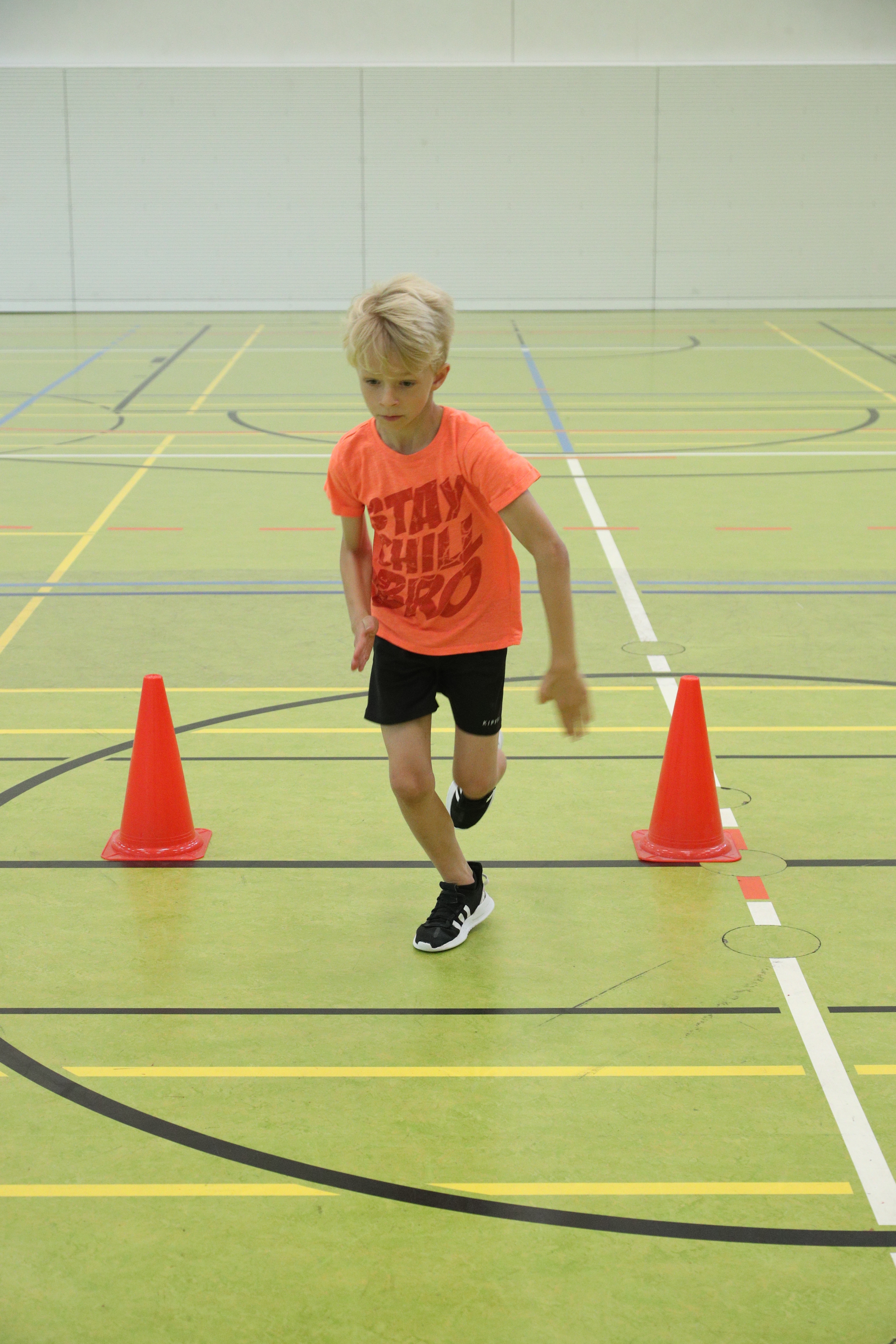 |
Balancing Backwards
|
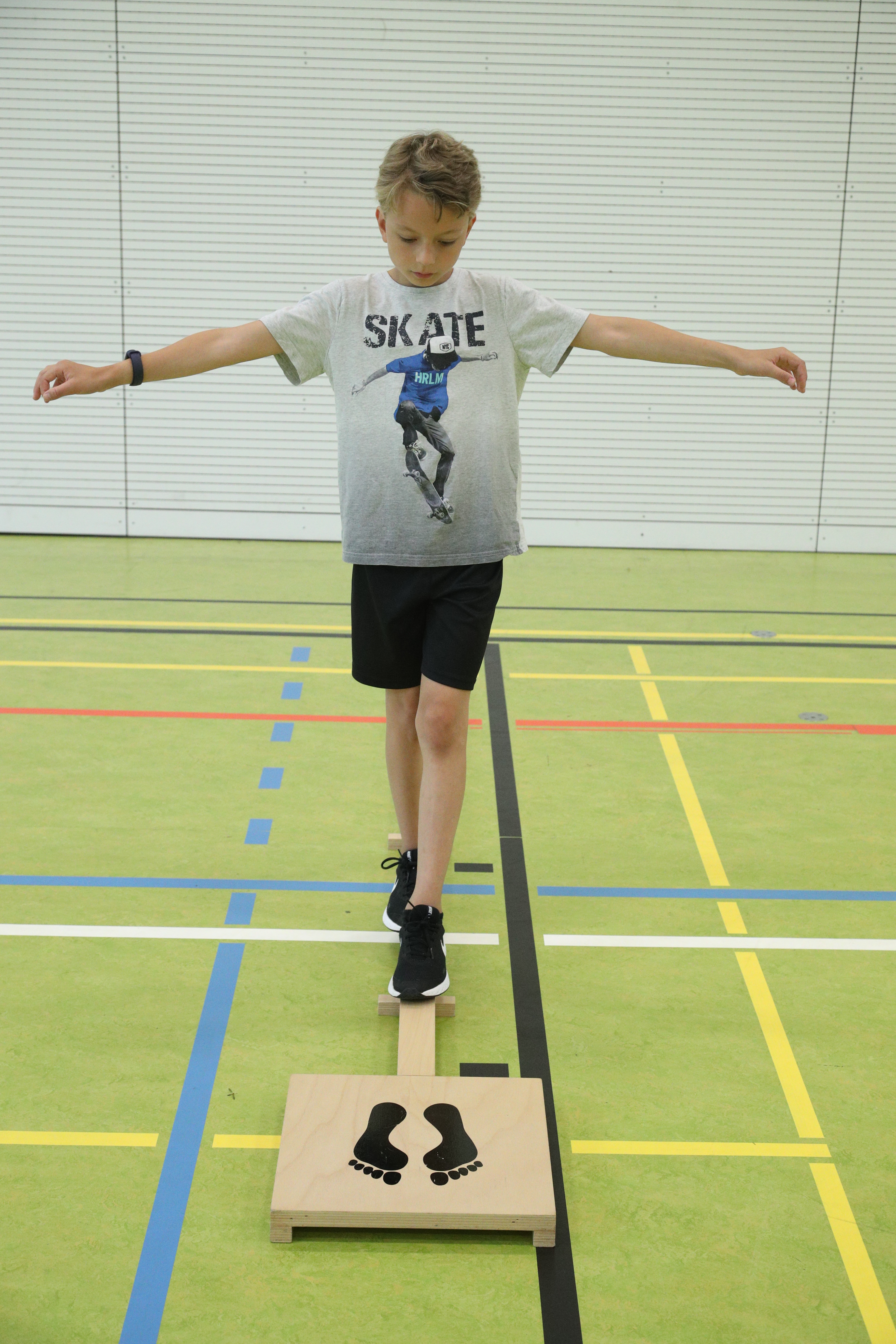 |
Test objective
This task is used to test whole-body coordination under precision demands.
Test task
The test includes three balance beams of different width - 6 cm, 4.5 cm and 3 cm. In two trials, the test subject balances backwards on each beam of different width until the end of the beam is reached. The test always starts with both feet at a starting board. The number of steps taken until touching the ground is counted. First, the test task is demonstrated. One trial is conducted forward and another backward. Then the two valid backward balancing trials are measured for each beam width.
|
Jumping Sideways
|
|
Test objective
This task is used to test whole-body coordination by jumping sideways under time demands.
Test task
The test subject jumps sideways across the midline of a mat with both legs simultaneously as fast as possible within 15 seconds. The test task is demonstrated previously and five trial jumps are conducted. Then, two valid trials are measured. There is a break of at least one minute between each trial. The number of jumps in 15 seconds is counted. Jumps are not counted when the test subject steps on the centre line, crosses one of the sidelines or does not jump with both legs simultaneously.
|
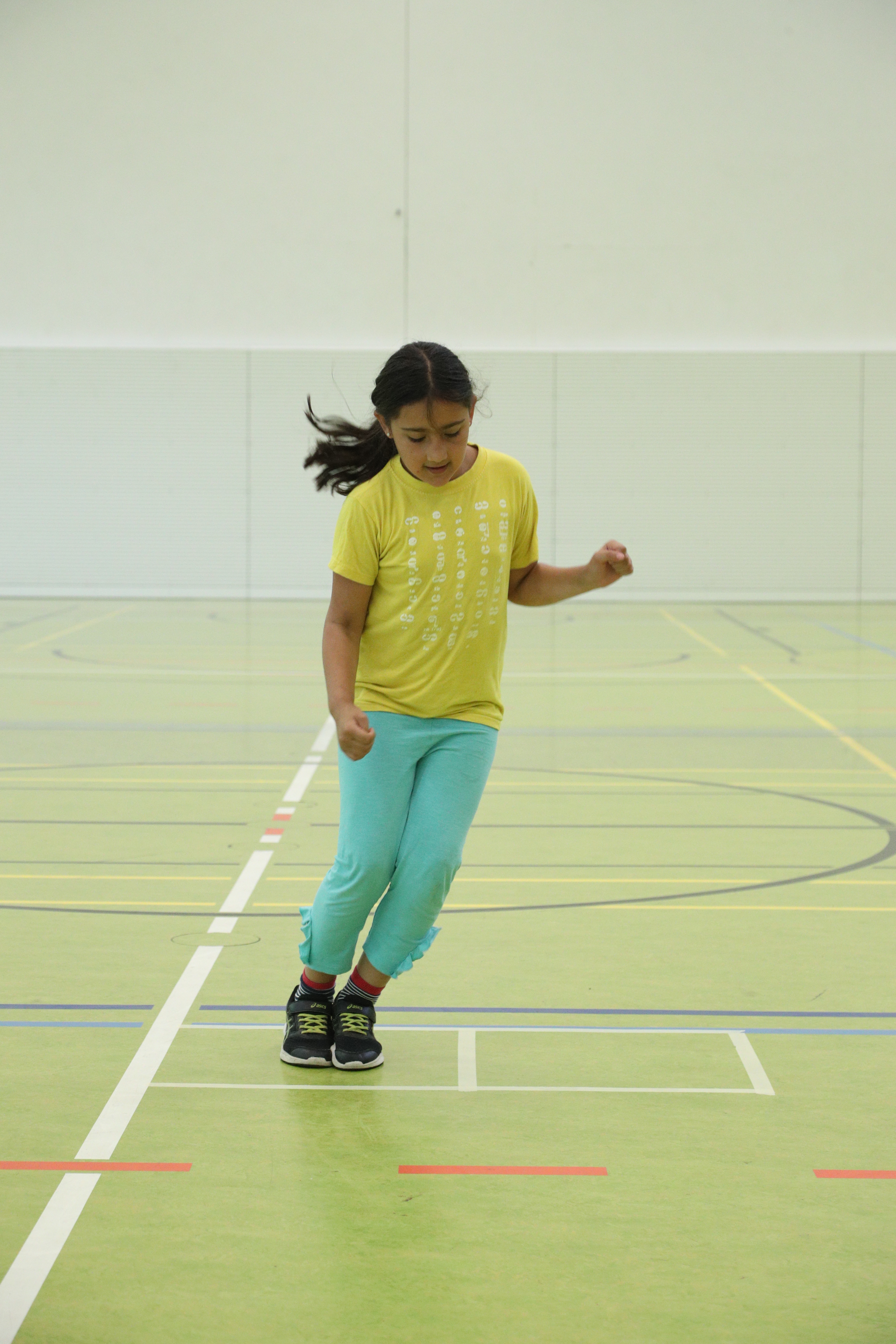 |
Sit-Ups
|
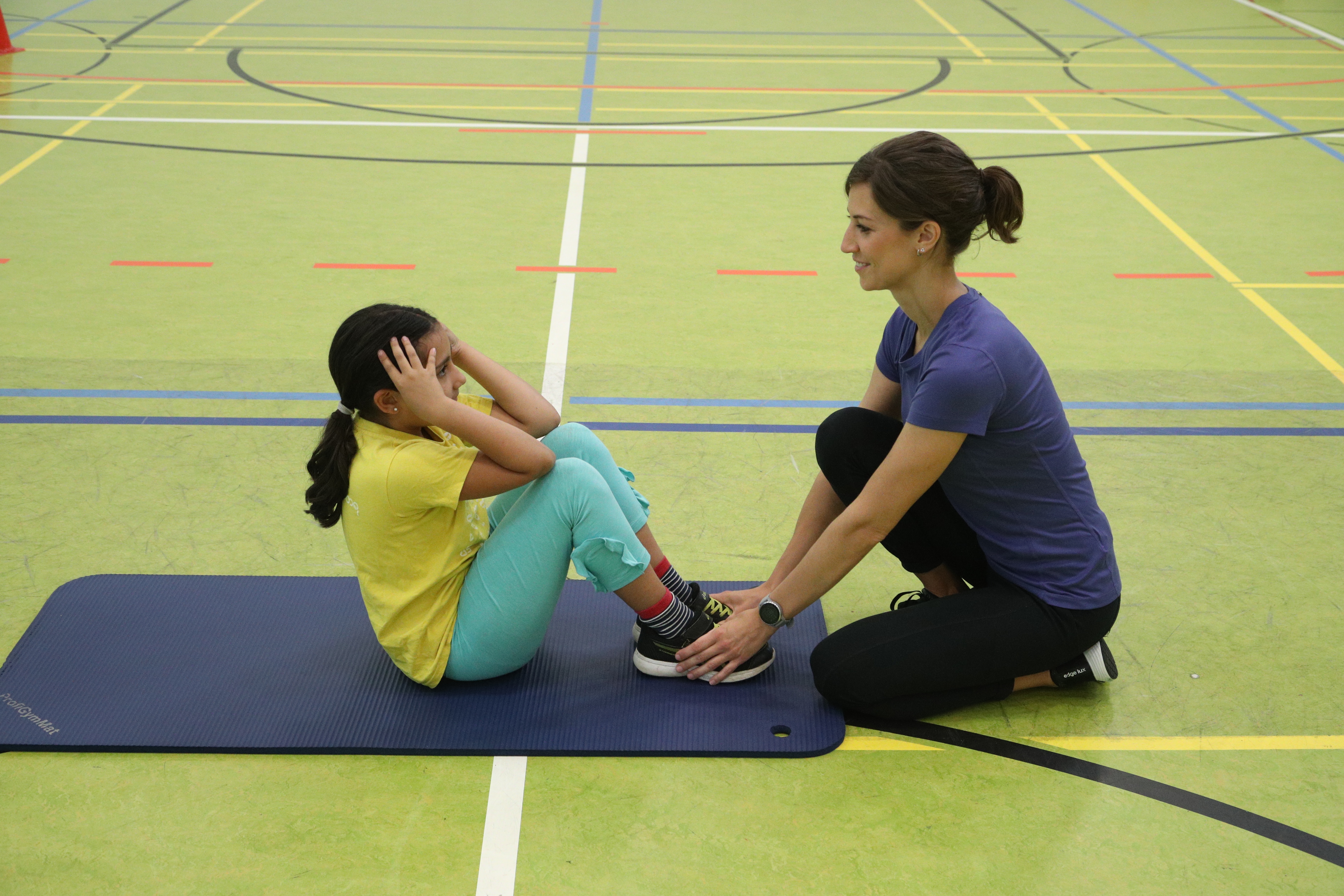 |
Test objective
This task is used to test the strength endurance of the core region.
Test task
The test subject performs as many Sit-Ups as possible within 40 seconds. During the performance test, a partner fixes the performer’s feet, the knees are bent by 80-100°. The fingertips touch the temple with the thumbs behind the ears. This position must not be changed during the performance. The test subject must lift his/her trunk from a horizontal position and touch both knees with his/her elbows. When lying back, both shoulders must touch the mat. One trial is performed.
|
Push-Ups
|
|
Test objective
This task is used to test the strength endurance of the of arms and trunk.
Test task
The test subject performs as many Push-Ups as possible within 40 seconds. The task is demonstrated previously. In the starting position, the test subject lies in prone position with her/his hands touching her/his buttocks. The test subject releases her/his hands behind the back, places them next to the shoulders and pushes off the ground until the arms are extended and the body is in a stretched position off the floor. Then one hand is released from the ground and touches the other hand. In this phase, only the hands and feet are in contact with the ground. A sagged posture must be avoided. Afterwards the arms are bent until the test subject lies in prone position again and reassumes her/his starting position. The correctly performed Push-Ups within 40 seconds are counted. That is, each time the hands touch again behind the back.
|
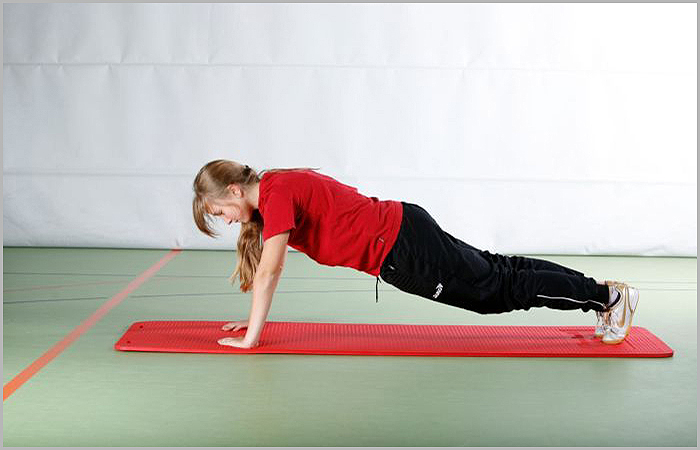 |
Standing Long Jump
|
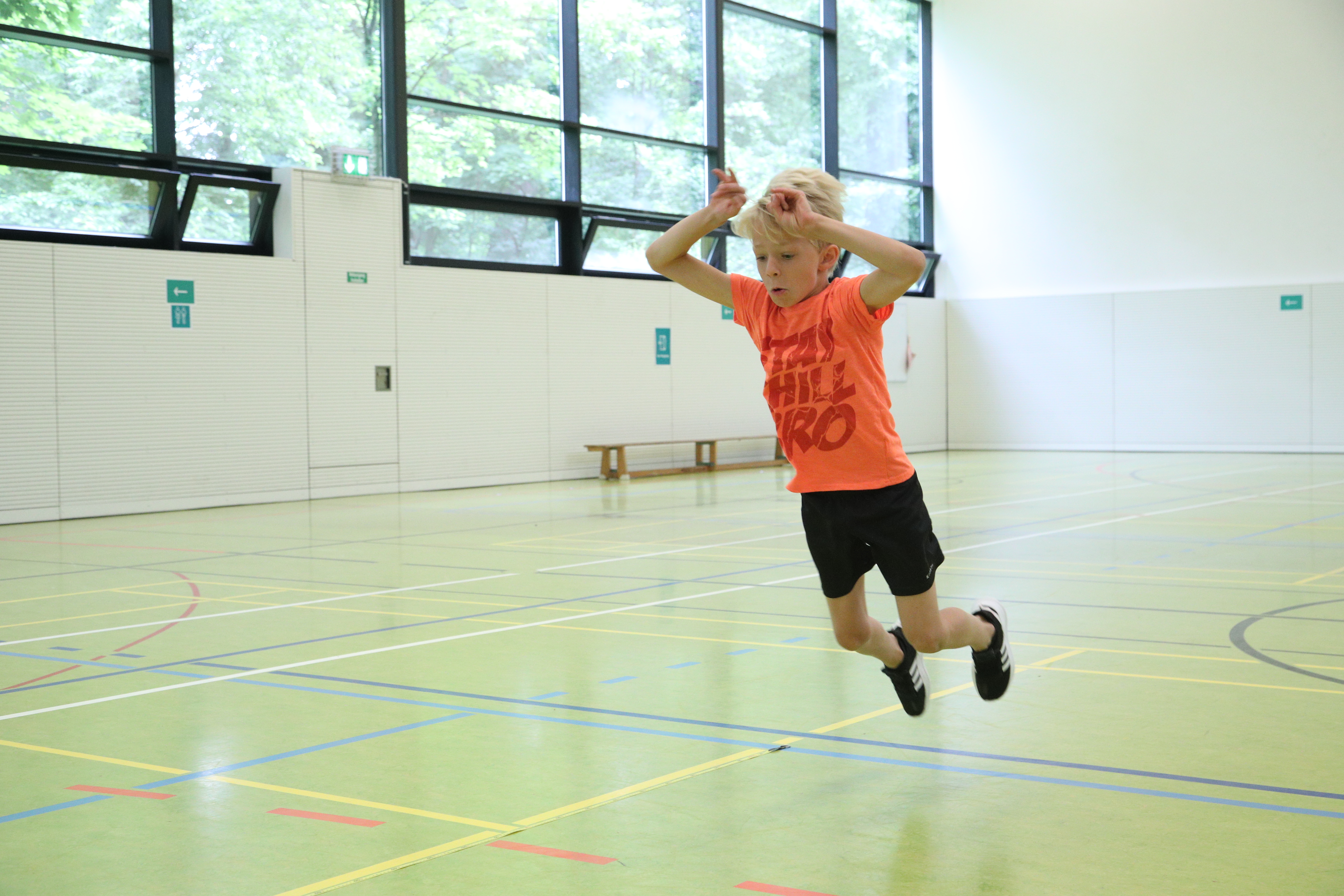 |
Test objective
This task is used to test the power/speed strength during jumping (jumping power).
Test task
The test subject performs one jump jumping as far as possible (counter-movement jump). The test is demonstrated in advance by the test leader. The jump and landing must be performed with both legs simultaneously. During the landing, the hands must not touch the ground. The test subject performs two trials, which are measured. The distance between the take-off line and the landing point – heel of the rear foot – is measured. The measurement is made in centimetres.
|
Stand and Reach
|
|
Test objective
This task is used to test trunk flexibility.
Test task
The test subject stands on a bench or a wooden box without shoes (socks are allowed). She/he slowly (!) bends her/his upper body forward and moves her/his hands down as far as possible, along a centimetre measure. The legs are parallel, the knees are extended. The maximum stretch position attained must be held for two seconds. The centimetre value is measured at the lowest point reached with the fingertips. The test subject has two valid trials. Between the trials, the test subject should stand upright.
|
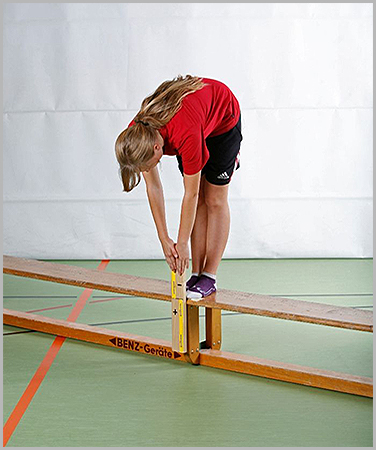 |
6-minute Run
|
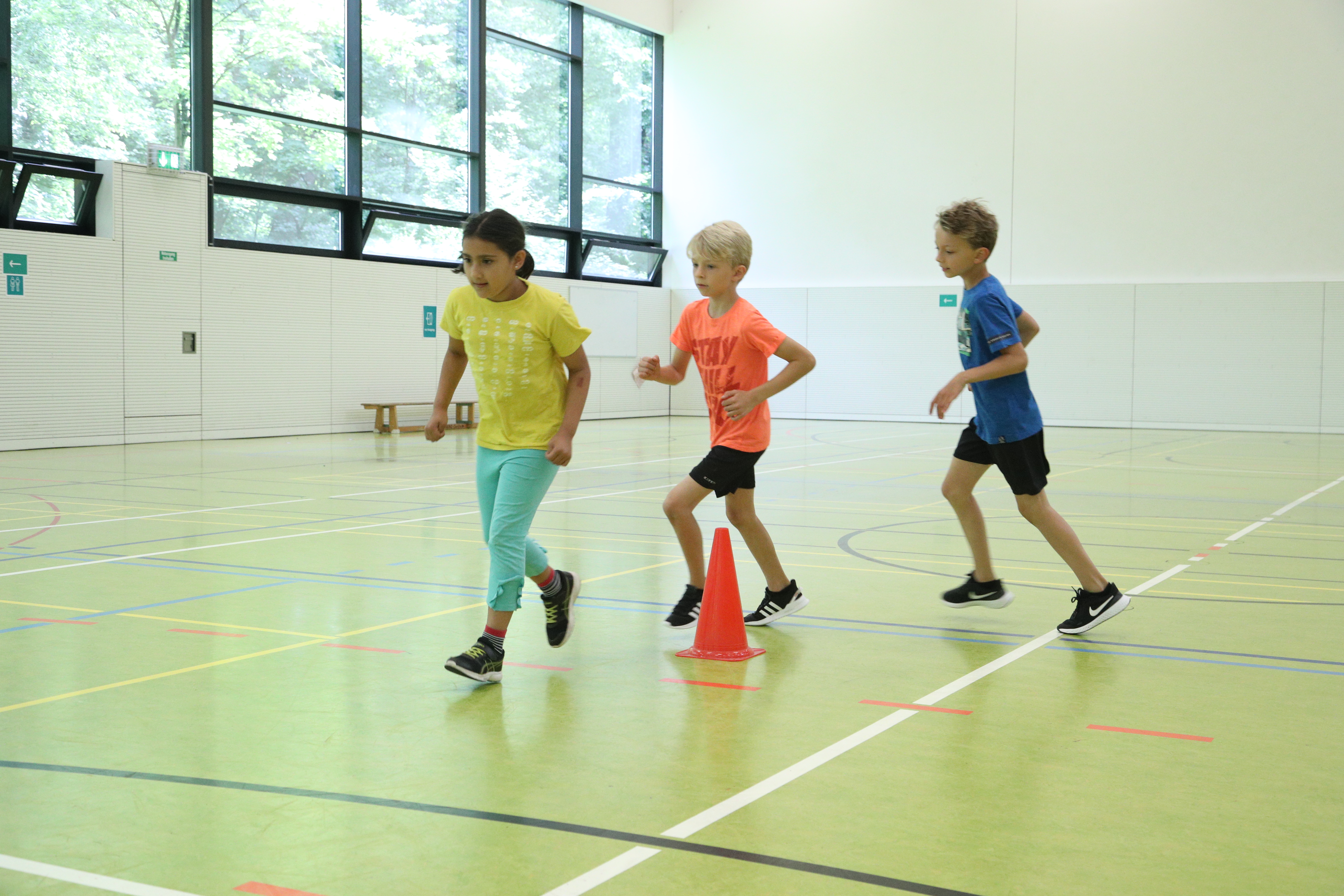 |
Test objective
This task is used to test aerobic running endurance.
Test task
The test subjects have to run around the volleyball court as many times as possible in six minutes. The endurance run takes place in groups of up to approx. 10 test subjects. Each subject receives a start number or a start letter for identification.
During the six minutes, running and walking are allowed, but standing still is not permitted. One subject sets the running rhythm and pace for the first two laps for orientation. During the run, the time remaining to run is given at one-minute intervals. At the end of the six minutes, each test subject stops in place and sits down on the floor.
|








